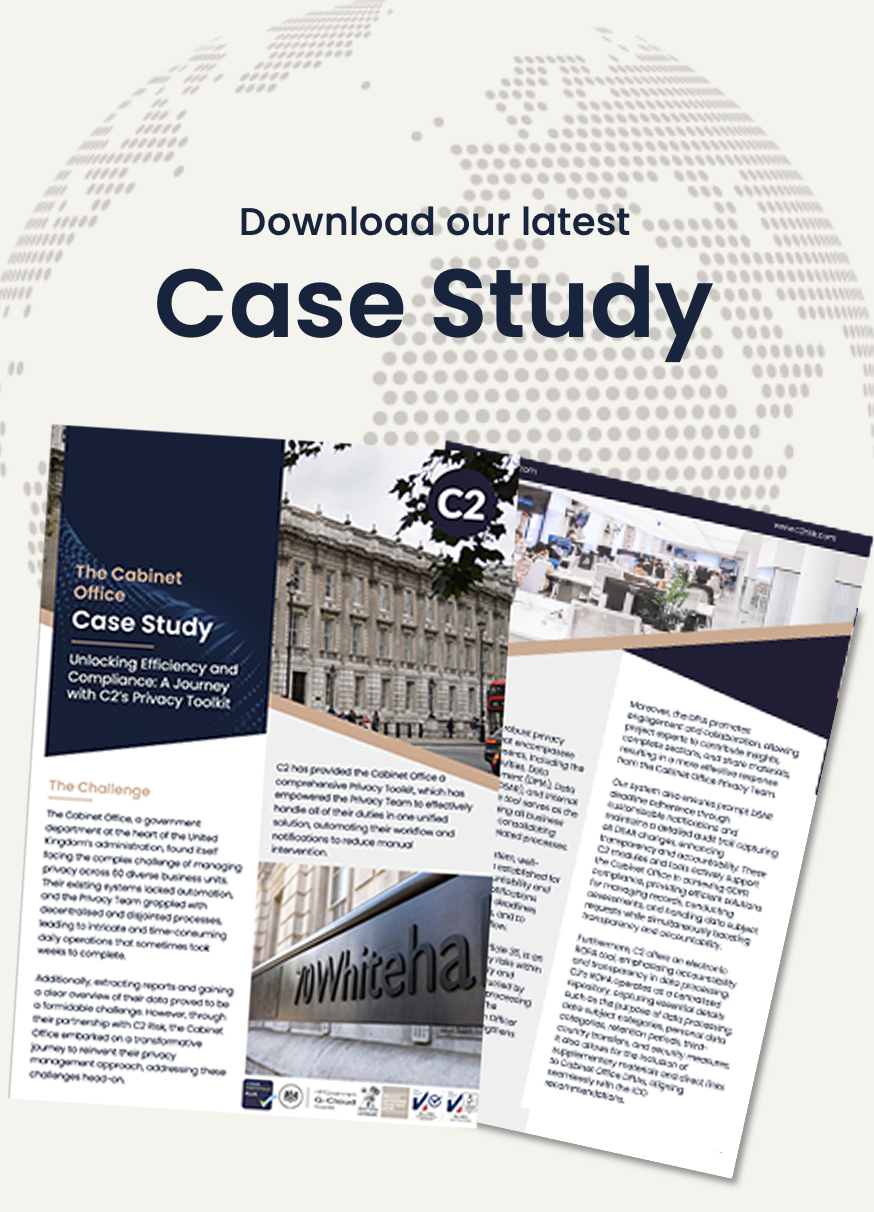Vendor Risk Management: Top Questions Answered

Vendor Risk Management: Top Questions Answered
In this blog, we dive into the most commonly asked questions our experts get when it comes to Vendor Risk Management. The increasing reliance on external partners, suppliers and service providers has made it crucial to ensure that these relationships don’t compromise your company’s security, compliance or reputation.
Check out the most frequently asked questions on Vendor Risk Management to help you understand its significance and how to implement a solution that’s effective and flexible for your business.
What is Vendor Risk Management (VRM)?
Vendor Risk Management is often also referred to as Third-Party Risk Management (TPRM), it’s a structured approach to assessing and mitigating potential risks associated with your businesses relationships with external suppliers. Which can be composed from anyone that collaborates with your business to deliver products or services.
The goal of VRM is to proactively identify, evaluate and manage associated risks, ensuring that their activities and business processes align with your organisation’s strategic objectives while minimising potential threats.
What counts as a vendor?
A vendor, in the context of vendor risk management, encompasses any external entity that provides goods, services, or technology solutions to your organisation, such as suppliers, contractors and service providers.
Essentially, any business relationship that involves a transfer of resources or data should be considered as a vendor when assessing risks.
Why is Vendor Risk Management so important?
Vendor risk management is paramount in any business that manages third-party relationships because of the following reasons:
- Security: Third-party data breaches can have detrimental consequences to an organisation, such as operational downtime and loss of sensitive data.
- Compliance: Failing to comply with regulations can lead to hefty fines, and also significantly impact a company’s valuation and share price.
- Operational Continuity: Vendor risks can disrupt your organisations’ ability to operate efficiently, or in some cases, at all. This downtime incurs costs, losses, and redirection of resources to investigate and recover.
- Reputation Management: Data breaches can be devastating to an organisation’s reputation. News travels fast, and often is very challenging to reverse. Customers are mindful to value their personal data and if organisations fail to demonstrate secure and responsible data protection, they will look elsewhere.
- Cost Effectiveness: Effective VRM can help you identify cost-saving opportunities and optimise relationships, as well as reduce resources internally with automated processes and risk analysis.
What is a Vendor Risk Management Framework?
A VRM framework is a structured set of policies, processes and procedures that guide your organisation in managing and mitigating risks associated with third parties. It typically involves:
- Identifying and categorising vendors based on importance/criticality and risk.
- Evaluating risks associated with each vendor, from security, compliance, operational and financial risk.
- Implementing risk mitigation strategies and controls to reduce threats.
- Continuous monitoring of each vendor to ensure they meet your risk and compliance standards.
- Preparation for and responding to any incidents or issues related to a vendor.
Why not book a call back with one of our experts today to find out how C2 can help you to implement an effective VRM solution that scales as your business grows.
How do I avoid a data breach?
To avoid data breaches through vendor relationships, best practices are:
- Data Encryption: Ensure data transferred to and from vendors is protected and cannot be breached by any unauthorised parties.
- Access Controls: Limit access to sensitive data and systems, both internally and externally.
- Regular Audits: Conduct regular security audits and assessments of vendor systems.
- Incident Response Plan: Have a robust incident response plan in place for swift action in case of a breach.
- Contractual Safeguards: Include security clauses and compliance requirements in vendor contracts.
How do I assess my Suppliers/Vendors/Third Parties?
Assessing vendors involves the following steps:
- Identify Critical Vendors: Determine which vendors have the most significant impact on your business.
- Risk Assessment: Evaluate each vendor’s risk based on factors like data access, industry regulations, and past performance.
- Due Diligence: Conduct due diligence through questionnaires, audits, and reviews.
- Continuous Monitoring: Implement ongoing monitoring to detect changes in vendor risk profiles.
And what are the steps to conducting a Vendor Risk Assessment?
- Collect as much vendor information as possible.
- Identify and evaluate the potential risks associated with their operations and the impact these risks could have on your business.
- Develop strategies to mitigate or manage these identified risks.
- Maintain records of these assessments, findings and risk mitigation actions.
- Conduct frequent risk assessments to ensure there are no changes to the above.
How to choose the right VRM software
Selecting the right solution for your business is crucial for effective VRM. For some organisations, the world of vendor risk can be a minefield, implementing the right policies and frameworks can feel like a daunting task, but by exploring and understanding the below elements should help you to understand what’s important to you and how a VRM solution can help your business:
Scalability:
Ensure the solution is flexible to your business needs and can handle your current and future vendor relationships. As your business grows you want to have a solution that grows with you and won’t impact productivity.
Integration:
Does the solution integrate with existing systems and tools you currently have? Choose a solution that seamlessly integrates and provides a set up that won’t impact anything existing within your organisation.
Security:
Verify that the software itself is secure and compliant with industry standards.
User-friendly:
Opt for a solution that automates a lot of your existing process and simplifies the VRM process for your team.
Reporting & Analytics:
Look for software that provides robust reporting and analytics capabilities.
With C2 you can instantly get snapshots of a Vendor Security Position generated from the analysis of over 100,000 Data Points derived from Open Source Intelligence, The Dark web, Commercial & Government Feeds and other sources. Providing customers with easy to understand risk scores based on the changing digital environment.
VRM doesn’t need to be complicated
By understanding the significance of VRM and implementing a comprehensive framework, you can minimise risks, ensure compliance and protect your companies reputation and data. Choosing the right vendor risk management software can further streamline the process and enhance your overall risk management strategy.
Speak to our team today to find out how C2 can implement an effective risk management solution for your business.
About C2
C2 is a UK risk management scaleup on a mission to help businesses survive and thrive in the digital economy. C2 helps organisations manage security and compliance in a way that’s unique to their business and that does more than simply ticking off digital checkboxes. C2’s industry-leading platform supports the public and private sectors in managing their threat landscape and improving vendor controls, project, privacy, and ESG risks.



